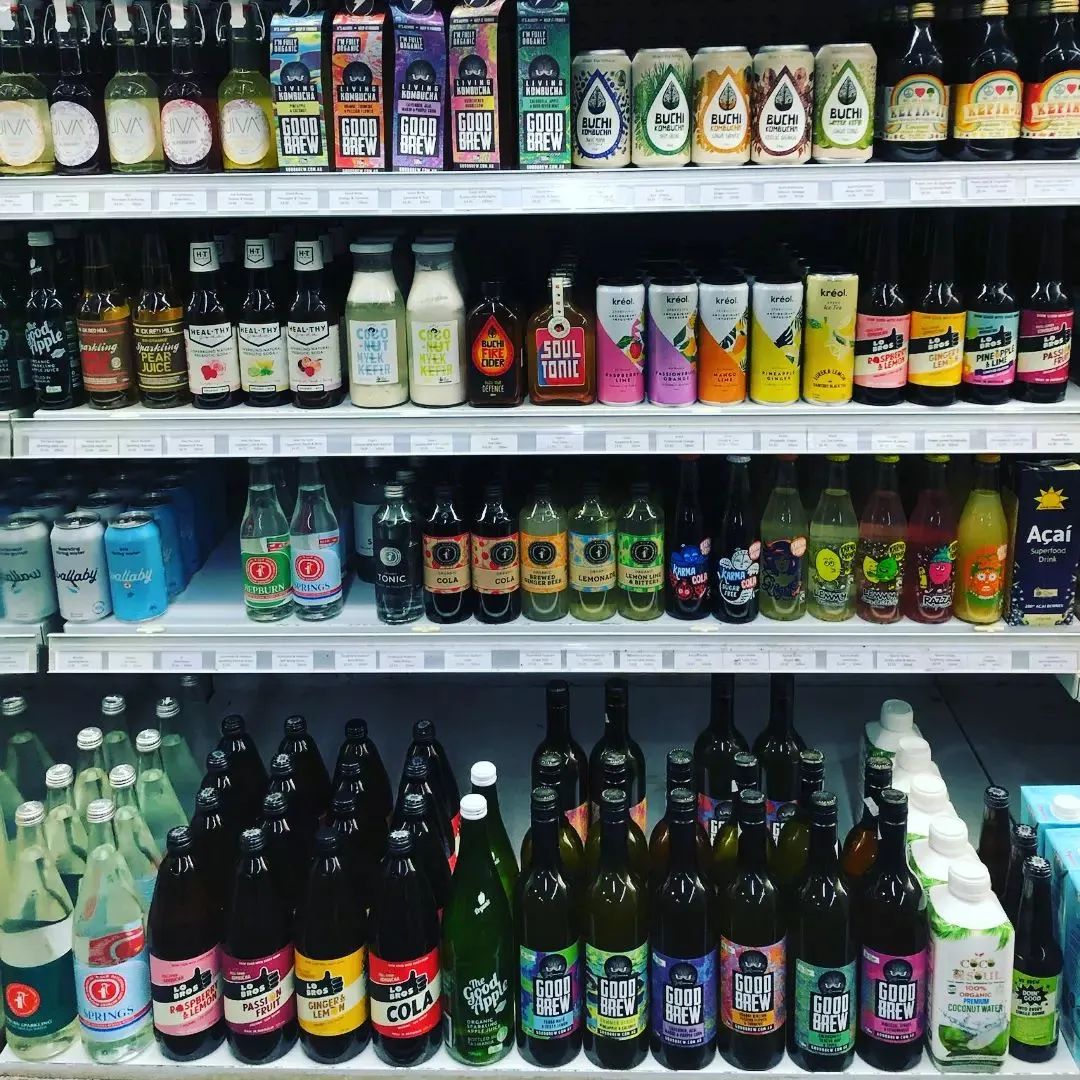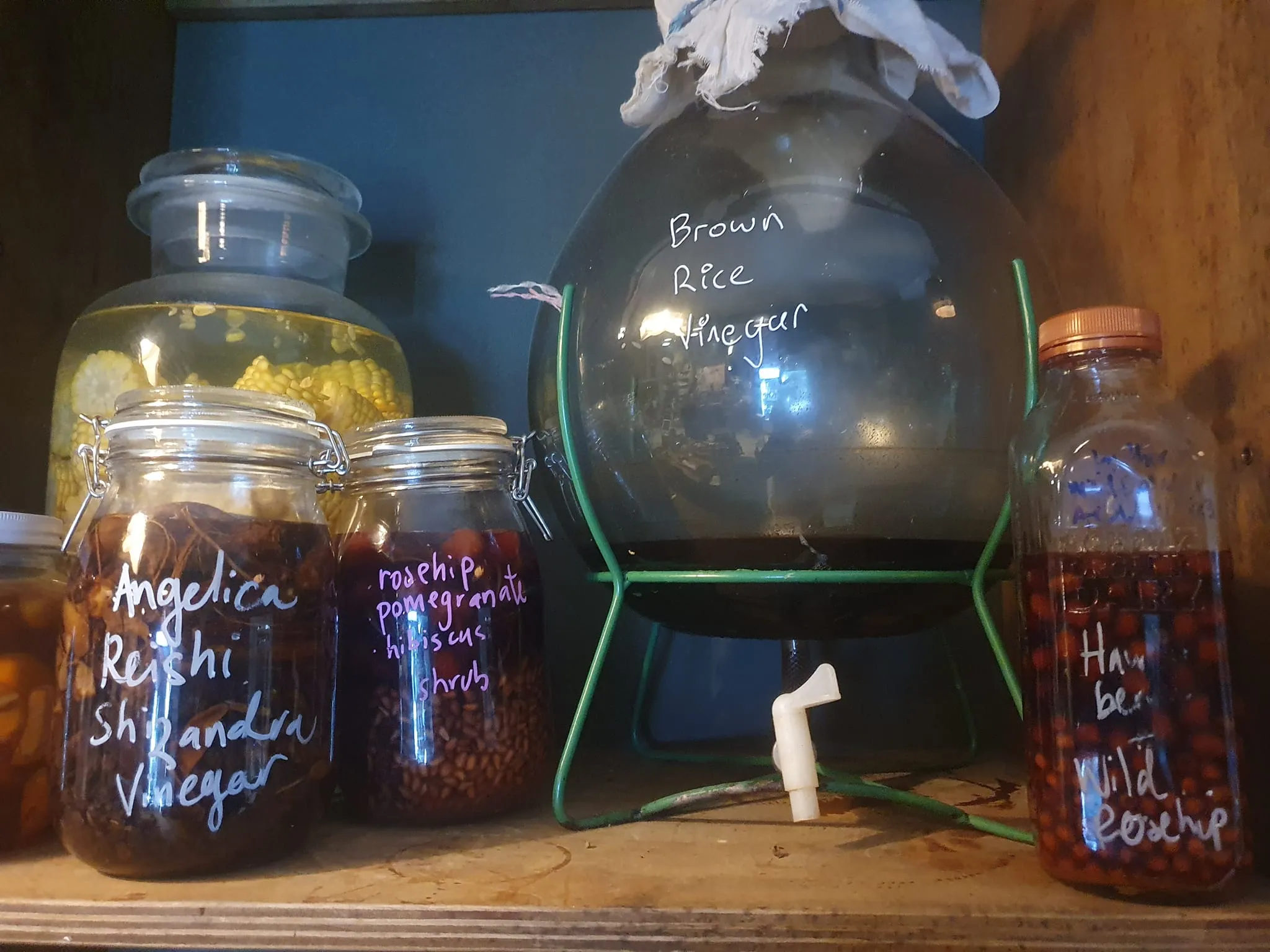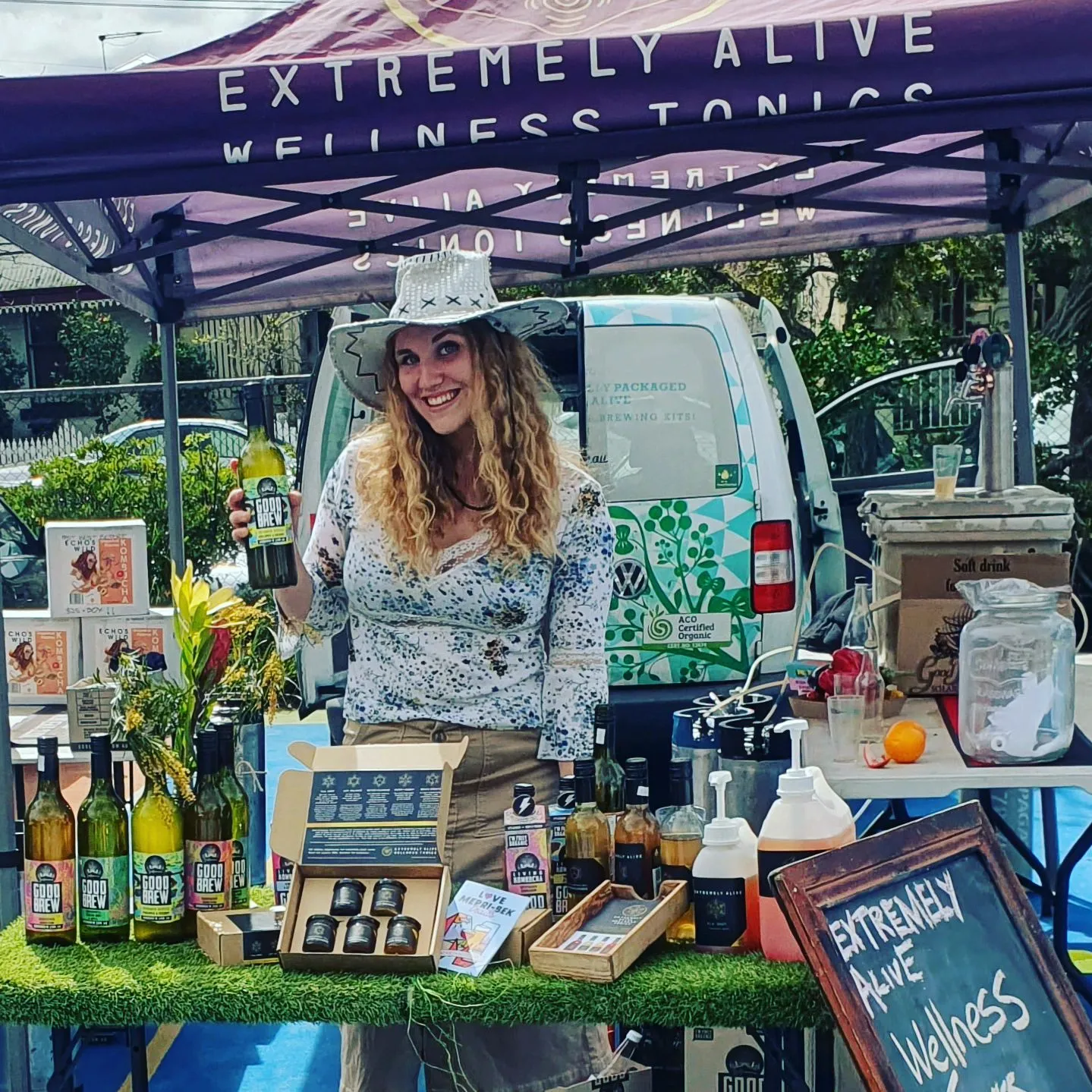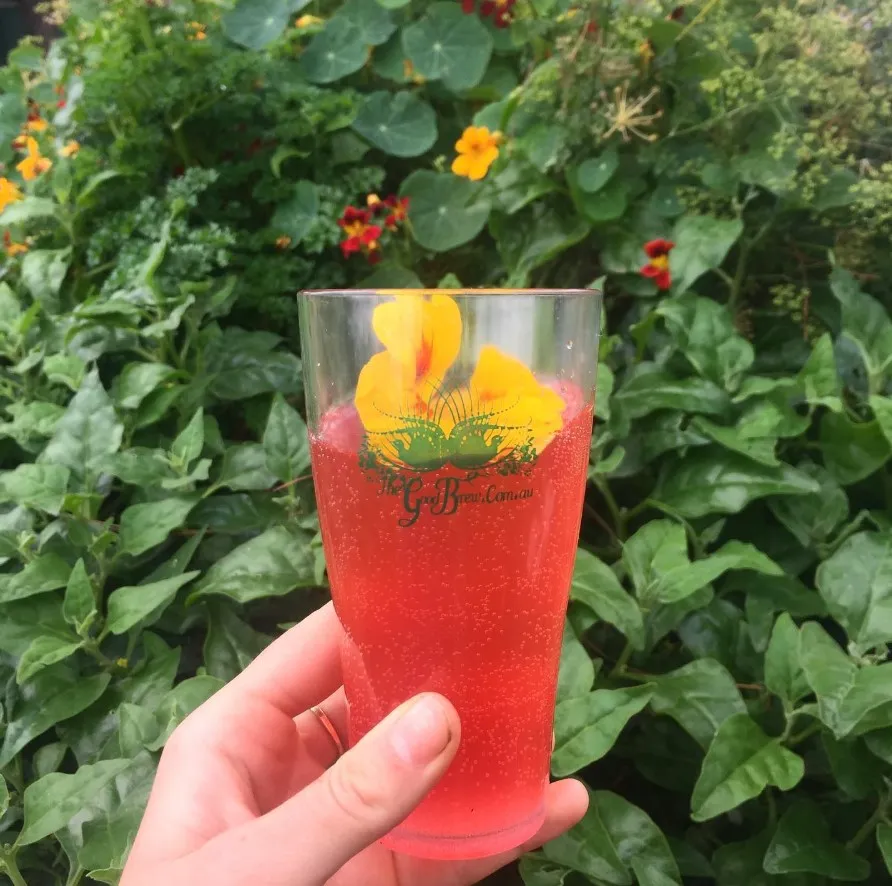
If you’ve found yourself comparing labels or wondering what the real difference is, you’re not alone.
This guide breaks down three key areas – sugar content, fermentation process, and gut health impact to help you decide which drink actually serves your body (and which one just satisfies your sweet tooth).
Sugar Levels: A Clear Comparison
Here’s a side-by-side comparison:
| Drink | Sugar per 100ml | Sugar per Standard Serve (375ml can) |
|---|---|---|
| Coca-Cola Classic | 10.6g | ~40g |
| Lemonade (typical brand) | 10.5g | ~39g |
| Raw Kombucha (Good Brew) | ~2.5g | ~9g |
| Filtered Commercial Kombucha | 4–6g | ~15–22g |
Unlike soft drinks, where all sugar is added after production, kombucha’s sugar is used during fermentation. The SCOBY (symbiotic culture of bacteria and yeast) converts sugar into organic acids and natural carbonation – meaning the final sugar content is much lower than what’s added at the start.
Residual sugar (kombucha) is what remains after fermentation. Added sugar (soft drinks) is dumped in for taste – and stays in full.
Learn more about how our kombucha is brewed and bottle-conditioned.
Fermentation vs. Flavouring
Here’s the core difference in how these drinks are made:
Soft Drinks:
Made with carbonated water, added sugars, flavours, and preservatives
Artificially fizzy via injected CO₂
Contains no living organisms or functional ingredients
Kombucha:
Brewed from tea, sugar, and a live SCOBY
The result? A drink with depth, complexity, and natural acidity — not just sweetness.


Gut Health: One Helps, One Hurts
Soft Drinks:
While they might taste great going down, soft drinks are high in added sugars and offer zero benefit to your gut. In fact, excessive intake of sugary sodas has been linked to reduced microbiome diversity and increased inflammation in the gut.
Kombucha:
When it’s raw and unpasteurised (like our Good Brew range), kombucha contains a living mix of beneficial microbes — including acetic acid bacteria, yeasts, and lactic acid bacteria.
These cultures can:
Help balance your gut flora
No, it’s not a miracle cure. But it’s a living beverage with more in common with yoghurt than lemonade.
See what the RMIT study found in our kombucha microbiome breakdown.
Energy & Crash Factor
That 3pm Coke might feel refreshing, but what happens next?
| Effect | Soft Drink | Kombucha |
|---|---|---|
| Initial energy boost | High (due to sugar hit) | Mild (gradual release via organic acids) |
| Crash afterwards | Likely (insulin spike + drop) | Unlikely (no sugar spike) |
| Lasting hydration | Low (high sugar = dehydrating) | Higher (lower sugar, fermented tea base) |
Many people are now turning to kombucha as a functional beverage — something that satisfies the need for fizz and flavour, but without the metabolic rollercoaster.
Want more ideas on how to build kombucha into your daily rhythm?
Check out Why Kombucha Works Best as a Routine.
So, Is Kombucha Really Better Than Soft Drink?
In short: yes – when it’s real kombucha.
While both drinks might come in a bottle and sparkle when opened, kombucha is fundamentally different:
Use our guide to spot a real brew before you buy.


Taste the Difference for Yourself
You don’t have to give up fizz — just give up the dead sugar water.
Good Brew kombucha is:
Shop the Good Brew range and try a real alternative to soft drinks — your gut will thank you.

 54 Hope St, Brunswick VIC 3056
54 Hope St, Brunswick VIC 3056
